Conference and Instrument
ANNOUNCEMENTS
7th Austrian Hungarian International Conference on Vibrational Spectroscopy, Balatonfured, Hungary, April 7-9, 1999.
The series of conferences started in Vienna in 1986 as a bilateral event hand has grown into popular international meeting attracting participants from all over the world during the past 12 years. After Vienna, next meetings were held in Veszprem (1987, 1990, 1994) and Linz (1988, 1992). 7th event was held in Balatonfured, a resort town situated at Lake Balaton, 14 km from Veszprem. The meeting was organised by the Janos Mink (Hungary) and Berhard Lendl (Austria) supported by team of co-workers. Meeting was organised in memoriam of Prof. Robert Kellner (Vienna University of Technology), 50th anniversary of the Veszprem University and 40th anniversary of the Institute of Isotope and Surface Chemistry of the Hungarian Academy of Sciences. Among almost hundred participants, there were representatives of 15 different nations from Europe and North America. Programme of the meeting was divided on plenary lectures (11), contributed lectures (9) and posters (almost 60).
There were presentations related to application of vibrational spectroscopy in different areas:
- MIR and NIR-spectroscopy,
- Raman spectroscopy,
- analytical chemistry and life science applications,
- materials chemistry, surfaces and catalysis,
- environmental chemistry,
- time-resolved spectroscopy, multiple modulation, 2D spectroscopy,
- signal processing, chemometrics, high resolution spectroscopy,
- ellipsometry, hyphenated techniques, sensors,
- hydrogen bonding, polymers, aggregates, complexes.
All presentations (after normal referee procedure) will be published in a
special issue of Vibrational Spectroscopy.
Dr Janusz Ryczkowski
University of Maria Curie-Sklodowska
Faculty of Chemistry, Department of Chemical Technology
3 M.Curie-Sklodowska Square, 20-031 Lublin, Poland
Tel. +48(81) 537-55-96; Fax: +48(81) 53-33-348
e-mail: ryczkows [at] hermes.umcs.lublin.pl ( )
The T64000 Raman System The Next Generation in Research
Grade Raman Spectrometers
In recent years there has been a sharp increase in the number and form of analyses to which Raman spectroscopy has been applied [1]. The introduction of small bench-top spectrometer systems has certainly opened up the fields of study [2,3]. However, on the back of the renewed interest in the Raman technique, ever more demanding applications have arisen.
For this reason the next generation of Research grade instruments incorporate much of the cutting edge technology found in the bench-top systems, but also provide the higher performance required for samples which prove difficult or impossible to analyse with more routine instrumentation.
The Triple Spectrometer
The T64000 system is designed to provide a versatile platform for Raman analysis. It has an integrated triple spectrometer design for unprecedented optical stability. It features triple subtractive, triple additive, and direct single spectrometer operation to enable the user to select between a wide range of acquisition modes.
The instrument incorporates the proven technology of the confocal LabRam Raman microprobe. The mechanical coupling is rigid and stable. The optical coupling is efficient and throughput is limited only by theoretical considerations. Figure 1.
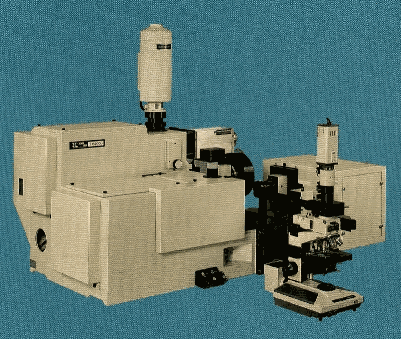
Figure 1. T64000 Triple Raman Spectrometer.
Shown here with Micro, Macro and PL attachments.
Operation
High stray light rejection
Holographic notch filter technology provides a very good solution to laser rejection for visible wavelengths in many applications. However, there are acknowledged limitations to the use of these filters for work close in to the laser line. Even with specially developed low frequency accessories [4] with many difficult samples it is still often impossible to obtain reliable data at 10, 20 or 30 cm-1. In using the double subtractive configuration, it is possible to obtain spectral information very close in to the laser line. Figure 2. Illustrates a spectrum of a proprietary SiGe material in which it is possible to observe spectral bands down as low as 4 cm-1. The subtractive mode is ideal for studying such detail as LA modes in polymer systems and crystal lattice modes.
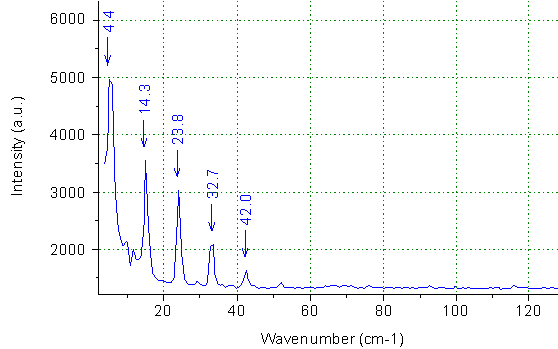
Figure 2. Raman spectrum showing Raman bands close in to the Laser line
Ultra high resolution
With the use of the ultra-high resolution triple additive configuration of the T64000 triple system, it is possible to very accurately study the position of Raman bands. This is of particular importance for the measurements of stress[5] in semiconductor materials such as GaN, SiC and diamond where stress induced shifts in the order of 0.1 cm-1 are often studied. The high resolution also offers the level of accuracy required for the authentication and certification of materials for Raman standards. Figure 3. shows the difference in spectral resolution between a single spectrometer and that of the triple additive mode. It can be clearly seen that for such applications it is necessary to acquire the data at a high resolution not achievable with a small focal length single spectrometer.
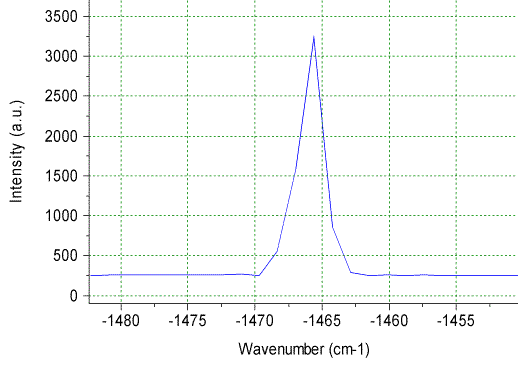
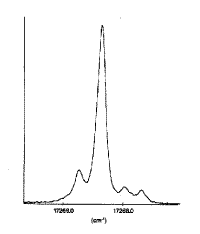
Figure 3. Spectra for high resolution additive mode and a standard single spectrograph on an atomic line of mercury.
Single spectrometer technology
With the final mode of operation, the direct spectrograph entrance, the system can be used with holographic notch filter technology and as a more conventional single spectrometer based system. The high throughput of the large optical components means that it is then ideal for Raman mapping ( Figure 4.) and even remote probe forms of analysis.
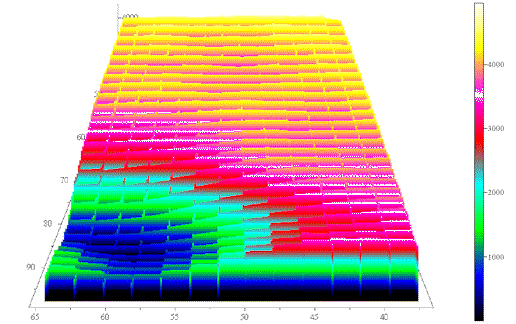
Figure 4. Raman mapped image of stressed silicon interface using single direct path operation.
The list of applications to which the T64000 can be applied is impressive including, thin films, solid state devices, biological chemistry and techniques such as UV, resonance Raman, PL and laser fluorescence.
In Summary, for demanding applications and work which requires high laser rejection, high spectral resolution and the obvious advantages of a continuously variable laser filter, the triple spectrometer system is an invaluable tool. With the introduction of the latest technology from the smaller bench-top systems it can also be applied to more general routine analysis. The T64000 heralds a new era for new and more versatile high grade research Raman instrumentation.
References
- Technical application notes, from ISA, various authors and titles including: ‘Integrated circuits’1998, ‘Polymer blends-identification and mapping of phases’ 1998 and ‘Derivation of physical parameters from Raman spectra of hard carbon films’ 1997,
All from Fran Adar – Scientific applications for ISA Inc. / - “Confocal Raman Imaging” M Delhaye and E da Silva, ISA publication 1990 /
- L Markwort, B Kip, J.App.Pol. Science, vol 61,231-254(1996)
- Laser light injection and rejection, 1997, E Da Silva, M Delhaye, Internal note/
- I De Wolf, Semicond. Sci. Tech. 11(1996) 139-154
ISA publications and internal notes are available on request from the addresses below.
Instruments SA Worldwide Raman
UK and Ireland
Instruments SA UK
2-4 Wigton Gardens
Stanmore Middlesex
HA7 1BG
Tel : 0181 204 8142
Fax: 0181 204 6142
Email : Sales [at] isa-gs.co.uk (mailto:)
Websites : http://www.isa-gs.co.uk and www.isainc.com
USA
Instruments SA Inc.
3880 Park Avenue
Edison, NJ 08820
Tel : 1 732 494 8660
Fax 1 732 549 5125
Email raman [at] isainc.com

